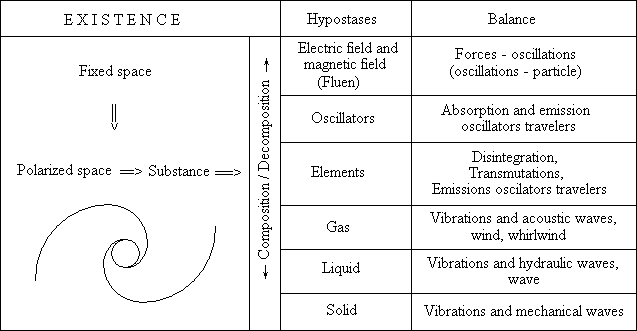
- Fluen => oscillation => corpuscle =>
vibrations => waves
Everybody knows about the experiments of Christiaan
Huygens regarding the phenomenon of vibration propagation started from
a center on the water surface area, with circular "undulations"
at the surface and having a "circular wave face". It is a "type"
image or "pattern".
Huygens noticed that light has properties of wave, reflection, refraction
and interference. Only that the idea of light ray, with straight line
propagation, used to generate confusion and assumed singularity, properties
"improper to the pattern".
Precisely such properties were the argument in Newton's corpuscular theory.
The same disparity was found two centuries later by Louis de Broglie as
well. He affirmed however that the particle had to be "a package
of special waves, unable to spatter in space".
The fluenic atomic model, the double-torus oscillator (hydrogen atom)
is a "package of Broglie" itself, but it is a polarized space
package - "special waves".
It has a structure, functioning, stability and properties of corpuscle,
logically and experimentally explainable.
The transition capacity of energy, absorption/emission, is integral part
of parte oscillations (functioning and stability). With entrance by electric
polarity (positive and negative) and exit by each of the two torus (pair
inducement).
The oscillators issues its own frequency, strictly dependent on the absorbed
energy (by electric power!). It is precisely the functioning principle
of any oscillating output circuit, which transforms the pulsations of
the current in the antenna, in oscillations of the polarized space (electromagnetic
waves).
Both the emitting stationary oscillator and the released traveling oscillator
are corpuscles, differentiated by the amplitude of the oscillation. The
amplitude being the oscillatory energy, which can be variable (of dilation),
or fixed, total (of propagation).
The torus of the stationary oscillator mutually transmit their oscillatory
energy, alternatively and balanced. The torus of the traveling oscillator
are mutually induced (released), consecutively, orthogonally and unidirectional,
therefore preserving the propagation amplitude (wave length). Oscillation
is like a pendulum, amplitude of which enters perpetual and constant coiled
rotation movement.
